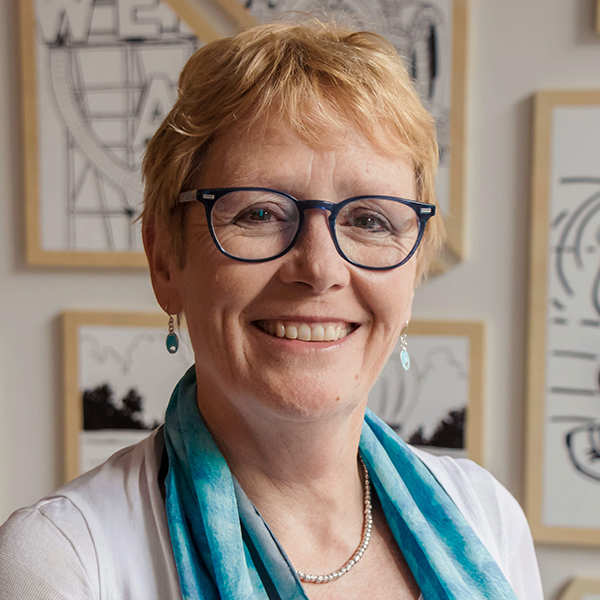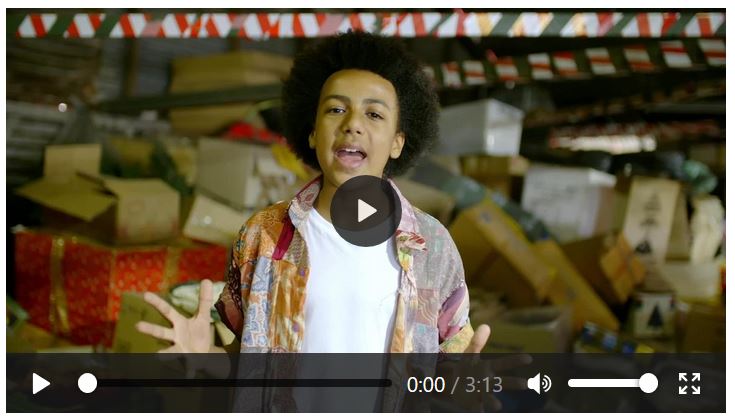Andrews McMeel Publishing is a major player in poetry’s resurgence with a new generation of readers. Their list includes bestselling poets like Rupi Kaur and amanda lovelace (whose most recent title, the mermaid’s voice returns in this one has over 400 reviews on NetGalley). With a focus on young, digitally-engaged poets from all over the world drawing upon their diverse backgrounds and experiences, they connect with audiences who may never have seen themselves reflected in poetry before.
In honor of National Poetry Month, we sat down with Kirsty Melville, President & Publisher of Andrews McMeel. In this interview, she tells us what she thinks is behind poetry’s current boom, where she’s looking for new voices, and what trends she sees on the horizon. She describes how the publishing industry is becoming more responsive to what readers are looking for, and how booksellers can use poetry to engage with new customers.
What do you think accounts for some of the popularity behind popular poetry from a diverse group of poets, especially among millennials?
The impact of technology, really. The ease of being able to connect and communicate online has opened up sharing. The ability for people to share their work online, and to share their books. And then for the books to be available at retail so that [readers are] having an experience online and then able to buy a physical book. Poetry lends itself to the experience of reading in short form online. You have that short, shareable mechanism that something like an Instagram distribution platform provides. It also provides building awareness. People want to read poetry privately and it’s a form of reflection, so you see them purchase the same poetry in a book so they can experience the same work.
One of the things that I’ve found most exciting about the poets that we publish is that it’s a global phenomenon.
One of the things that I’ve found most exciting about the poets that we publish is that it’s a global phenomenon. Lang Leav was this poet we published. She was born in a Thai refugee camp — she’s Cambodian originally, raised in Australia. She started posting her work on Tumblr. I saw that she had this fan base in Asia; young women in Singapore, Malaysia, and the Philippines were reading her work. I saw this community of young women who were totally involved and interested in what Lang had to say.
Young women see themselves reflected in [these] poets. So, you have someone like Rupi who is Punjabi-Canadian and she’s a brown woman. So suddenly brown women are seeing themselves reflected in the work of poets and spoken word artists. And then you have someone like K.Y. Robinson who’s from Houston and who’s African-American. She’s writing work and young women are seeing themselves reflected in her work. Or you have Upile Chisala who’s from Malawi; she’s speaking to African women. I think what’s happening is that the internet is facilitating young people seeing themselves reflected in the writers of today and responding to that.
People can finally have poets who are not dead white men writing about things that are relevant to them. Poetry has always been the form of talking about the meaning of life and expressing emotions around life and loss and trauma and understanding the world. All that’s happened is that the Internet’s facilitated that sharing.
Where are some of the places that you and your team are looking to keep up with emerging voices, emerging trends, or communities that you hadn’t known about before?
I think because I’m Australian, I’ve always had a global outlook. Last year I went to the Sharjah International Book Fair in the United Arab Emirates. One of our authors, Najwa Zebian, who is Lebanese, was on the panel there. I was fascinated to see the Arab world responding to poetry. Rupi had been there 2 or 3 years ago and had a similar response.
I was in Sydney in Australia and we are publishing a young aboriginal boy who is 13 years old who won the Australian Poetry Slam a year ago called Solli Raphael. And he writes about some of the issues that he, as an aboriginal and indigenous young man growing up in Australia [deals with]. Environmentalism, for example.
I’m looking in communities who haven’t had their worlds expressed.
I think a lot of young people see the world as a place they communicate, so I’m looking everywhere. And I’m looking in communities who haven’t had their worlds expressed. amanda lovelace, the author of the princess saves herself in this one, she has a strong feminist orientation and LGBTQ fan base.
What’s your strategy for moving poetry away from its reputation of being intentionally oblique or rarified, broadening the perception of poetry as something that is for a lot of different kinds of people?
This resurgence in poetry is providing an awareness of the power of poetry in people’s lives. I actually think that we as a culture are committed to poetry as a genre. At Foyles in London you can see Rupi Kaur next to John Keats in the poetry section. It’s bringing more people to poetry, bringing them more to discovery. Once you’ve read one type of poetry it can lead you to another.
Rupi recently wrote an introduction to a Kahil Gibran edition of The Prophet that Penguin Random House is publishing. [Young people are] interested in the genre and people want to write poetry. So there’s this great canon. [But] there’s room for everyone.
What trends do you see emerging in poetry for the rest of 2019 and beyond?
I think a lot of the themes that we’ve seen around feminism and self care and personal expression and identity and immigration.
We’re publishing a book next year with Ahmed Badr who was a refugee who started a platform called Narratio, which is about helping refugees write poetry about their experiences. He’s worked with the United Nations and so he’s been working with refugees to help them express their experiences through poetry. He was an Iraqi refugee who wrote a poem about the experience of having a bomb dropped on his house. He read it at the United Nations. He’s a student at Wesleyan, actually. He had launched this website in part because he wanted to be able to help others write about [the refugee] experience.
Greenpeace has enlisted Solli Raphael to be a spokesperson for their latest video. It’s pretty amazing how young people are embracing spoken word poetry as a means of communicating.
Anything else you’d like more people to know about poetry publishing?
One of the things that I have always been passionate about advocating for is booksellers to bring poetry out front. Young people are going into bookstores and buying poetry. So, poetry in the front. Put it on the cash rack. Have a display! It’s National Poetry Month now, so there probably is. But make poetry relevant again. Bring it back. I think it’s a way of bringing more young people into the stores.
It sounds like what you’re saying is that it’s less about booksellers making poetry relevant, but booksellers realizing that poetry is relevant and that it is what the next generation wants.
Yes, exactly. Poetry has always been there but for some reason gets a bad rap. But if all booksellers could treat poetry the way they treat fiction bestsellers… Put the poetry up front and see what happens! They might sell more than they realize. I think a lot of people are looking to break away from their digital lives and poetry is a form of self-care. I think that the things a lot of people are looking for are for nurturing and reflection and time for themselves. And reading a book of poetry is the way to do that. To be more human again.

Bio: Founding publisher of Simon & Schuster Australia, Kirsty moved to the U.S. in 1994 as Vice President and Publisher for Ten Speed Press and led in its transformation from a niche publisher into an internationally recognized, award-winning company. She subsequently departed Ten Speed to work as Publisher for San Francisco’s University Games, was appointed Publisher and Executive Vice President of Andrews McMeel Publishing in 2005, ultimately being named President and Publisher in 2009.
Known for best-selling humor, poetry, inspiration, entertainment and children’s books, Andrews McMeel is home to an extraordinary and vibrant selection of writers, artists, poets and comic storytellers. A global, independent, and integrated media partner, Andrew McMeel distributes creator content through global syndication; book, calendar and greeting card publishing; digital consumer experiences; and entertainment licensing. Under her leadership, Andrews McMeel has published many #1 New York Times bestsellers including Milk and Honey and The Sun and Her Flowers by Rupi Kaur, with more than 7 million copies sold, How to Tell if Your Cat is Plotting to Kill You by Matthew Inman, more than 1 million copies sold, the Big Nate children’s series by Lincoln Peirce, over 5 million copies sold, and Posh puzzle and coloring book program with more than 10 million copies sold. Since 2013 she has been at the forefront of changing the way poetry is perceived and marketed, helping grow and expand the poetry category for readers worldwide.


This was so interesting! I didn’t realize the global reach of poetry. I’m interested in learning more about poetry, so I hope booksellers follow Melville’s advice about bringing it out front. Thanks for this interview.
My theory is that poetry caters to the demand for short-form driven by the modern attention span. This can be good and it can be bad. 👾 Kevin Kelly, founder of Wired magazine, says that the nature of this industrial revolution leads to cheap, ubiquitous copies in the same say the nature of the first industrial revolution lead to compression and heat.
-Gen Z author of a book literally called poetry from The Future